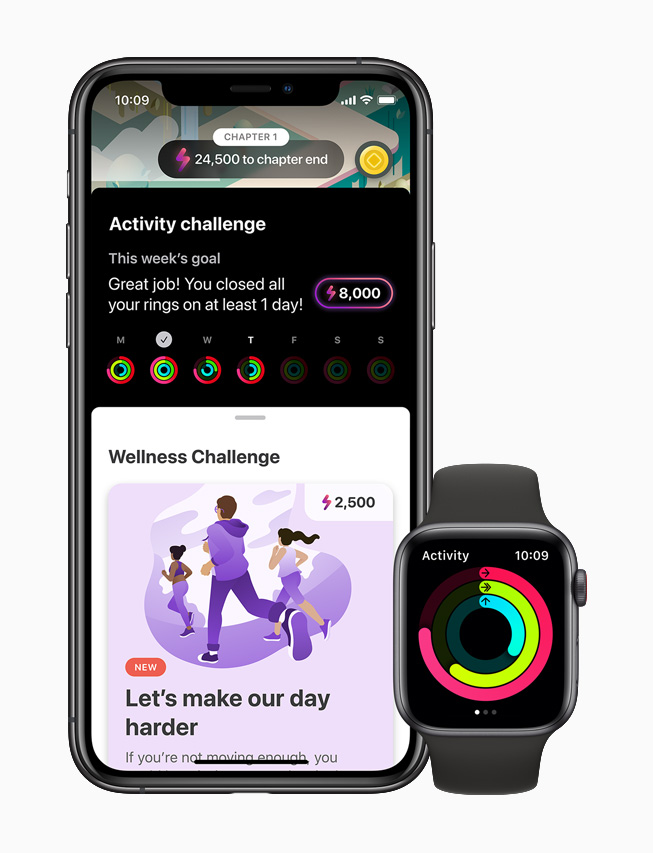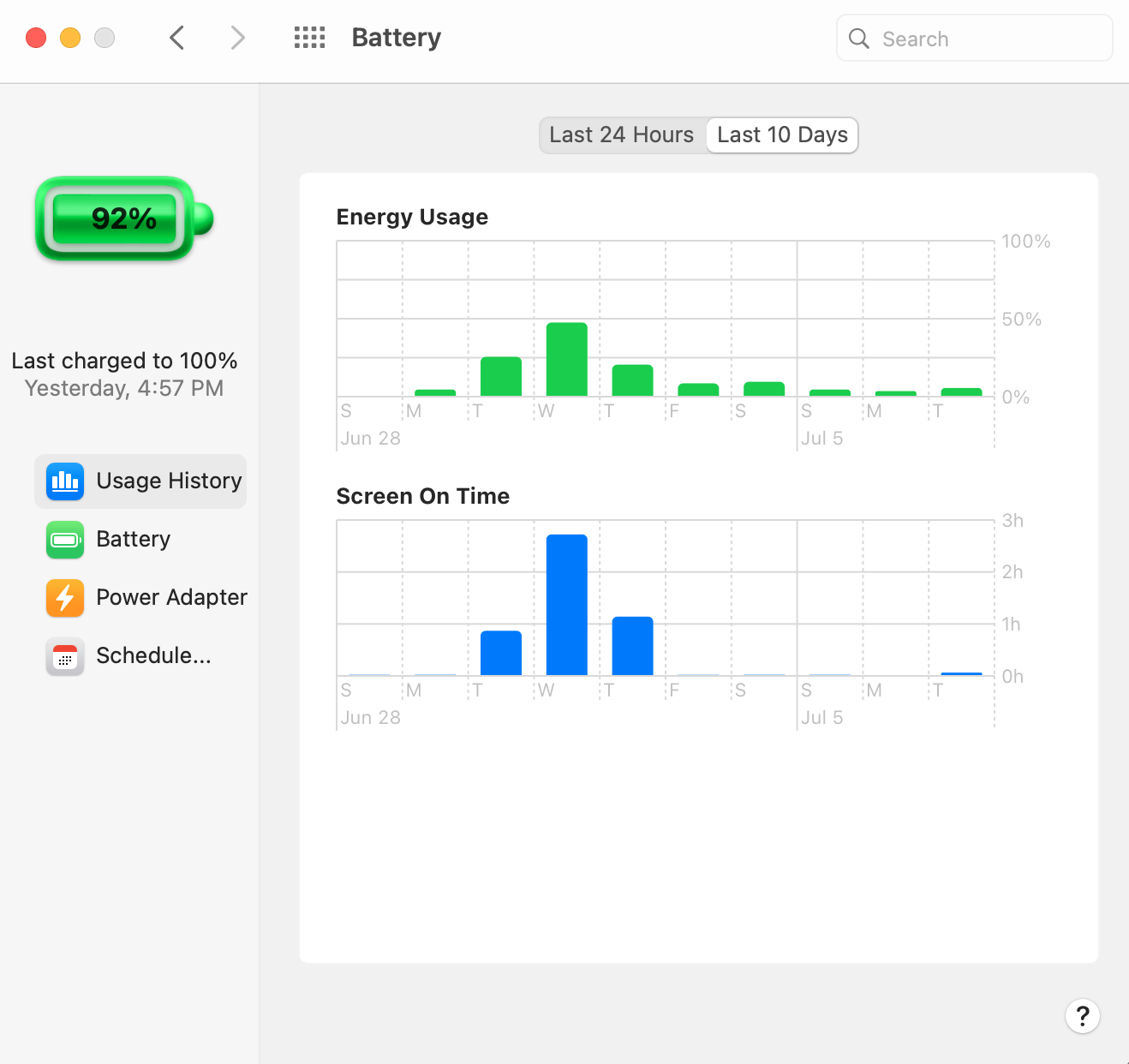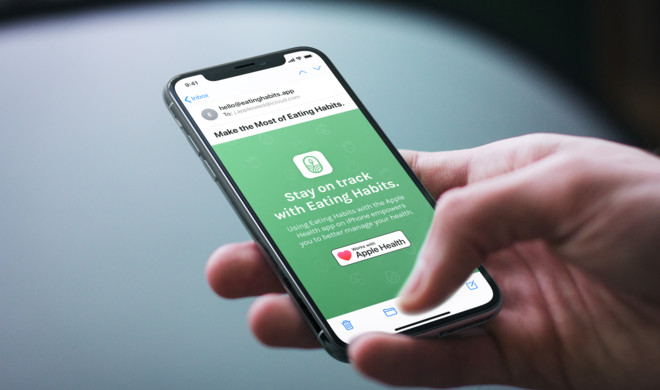- Download apps by Apple, including TestFlight, Beddit (for Model 3.5), Apple Developer, and many more.
- Apple leads the world in innovation with iPhone, iPad, Mac, Apple Watch, iOS, macOS, watchOS and more. Visit the site to learn, buy, and get support.
- Battery health management is on by default when you buy a new Mac notebook with macOS 10.15.5 or later, or after you upgrade to macOS 10.15.5 or later on a Mac notebook with Thunderbolt 3 ports. If you want to turn off battery health management on a Mac notebook with an Intel processor, follow these steps.
- Valid only on qualifying purchases in the U.S. For new Apple Card customers who open an account and use it between 3/1/2021 and 3/31/2021 at Apple Store locations, apple.com, the Apple Store app, or by calling 1-800-MY-APPLE. Accounts opened prior to 3/1/2021 or after 3/31/2021 do not qualify. 6% is the total amount of Daily Cash that can be.
If the battery's lowered charging capacity is affecting your experience, get your battery evaluated at an Apple Store or Apple-authorized service provider. While some third-party apps report on battery health conditions, the data reported by these apps may be inaccurate and isn't a conclusive indication of actual diminished system run time.
Optimize your battery life
Your notebook battery life depends on your computer's configuration and how you're using the computer. Here are some settings and steps you can take to get the most from your computer’s battery.
Check Battery preferences
The Battery pane in System Preferences has settings to help improve the battery life on your Mac notebook. To view Battery settings, choose Apple menu > System Preferences, click Battery or Energy Saver, then select the Battery tab.
The example above is from macOS Big Sur. Some features such as Automatic graphic switching and Power Nap aren't available on all Mac notebooks or versions of macOS.
For maximum battery life, use the following settings:
- Turn on “Slightly dim the display while on battery power”. This setting lets your Mac adjust the display brightness to 75% when you unplug the computer from power.
- Turn off “Enable Power Nap while on battery power”. This setting prevents your Mac from checking for mail or other iCloud updates during sleep which improves standby time.
- Turn on 'Optimize video streaming while on battery”. This setting lets high-dynamic-range (HDR) video play in standard dynamic range (SDR) while on battery power, which uses less energy.
- Turn on “Automatic graphics switching”. This setting lets MacBook Pro models with multiple graphics processors automatically switch between them to maximize battery life.
Adjust display brightness
By default, your display automatically adjusts the brightness to conserve power. If you turn off automatic brightness, you should turn it back on later to preserve battery life. To set the brightness automatically, choose Apple menu > System Preferences, click Displays, then turn on ”Automatically adjust brightness”. Learn how to adjust your brightness manually.
Check battery health
You can check the health of your battery in Battery preferences or the Battery status menu:
- In macOS Big Sur, choose Apple menu > System Preferences, click Battery, select Battery in the sidebar, then click Battery Health.
- In macOS Catalina or earlier, hold the Option key and click the battery icon in the menu bar to reveal the battery status menu.
You'll see one of the following status indicators:
- Normal: The battery is functioning normally.
- Service Recommended: The battery's ability to hold charge is less than when it was new or it isn't functioning normally. You can safely continue to use your Mac but you should take it to an Apple Store or Apple-authorized service provider to get your battery evaluated.
To get service on your battery, contact Apple.
In earlier versions of macOS, the battery status might display Replace Soon, Replace Now, or Service Battery if your battery holds less of a charge than when it was new or needs to be serviced. If the battery's lowered charging capacity is affecting your experience, get your battery evaluated at an Apple Store or Apple-authorized service provider.
While some third-party apps report on battery health conditions, the data reported by these apps may be inaccurate and isn't a conclusive indication of actual diminished system run time. It's best to rely on the information reported in the battery health menu, described above.
Diagnose battery issues
Learn how to check your hardware, identify apps or features contributing to high energy use, and resolve charging issues.
Run diagnostics
A great place to start when troubleshooting battery issues is the built-in diagnostics that are available on your Mac notebook. Learn how to use Apple Diagnostics on your Mac.
If you don't find any issues with Apple Diagnostics, read on for more information about troubleshooting your battery.
Check the battery status menu
The battery status menu shows you how much charge your battery has and whether it's currently charging. This menu is at the right side of the menu bar:
The battery status menu also tells you if your display or any apps are using significant energy. Also consider closing any apps that are listed to save battery power.

If you use optimized battery charging in macOS Big Sur, you'll see additional information when your Mac is connected to power, such as whether charging is paused or when your battery will be fully charged. If charging is paused and you need to have your Mac fully charged sooner, click Charge To Full Now.
Resolve charging issues
Get help with other issues such as if your Mac won't recognize a power adapter or charge to 100%.
If your Mac isn't charging
Confirm the correct wattage AC adapter for your computer. A power adapter rated for a lower wattage than is required for the system might not reliably charge the computer. If you're not sure which power adapter to use with your computer, learn how to find the right power adapter and cord for your Mac notebook.
For more help, learn what to do if your USB-C power adapter isn't charging your Mac notebook. If issues persist, shut down your Mac, close the display for 30 seconds, then try to charge again. Or if you have an Intel-based Mac, reset the SMC.
If your Mac won't charge to 100%
If you use optimized battery charging in macOS Big Sur or use macOS Catalina or earlier, occasionally the battery might not show a full charge (100%) in macOS, even after the power adapter has been connected for an extended period of time. This behavior is normal and helps prolong the overall life of the battery.
Servicing the battery in your Mac notebook
MacBook, MacBook Air, and MacBook Pro computers with built-in batteries should only have their batteries replaced by an Apple Authorized Service Provider or at an Apple Store. Attempting to replace a built-in battery yourself could damage your equipment, and such damage is not covered by warranty.
Some older Mac notebooks have removable batteries that you can replace yourself. Contact an Apple Authorized Service Provider or an Apple Store for assistance servicing a removable battery.
Battery warranty information
Your Apple One Year Limited Warranty includes replacement coverage for a defective battery. If you purchased an AppleCare Protection Plan for your Mac notebook, Apple will replace the notebook battery at no charge if it retains less than 80 percent of its original capacity. If you don't have coverage, you can have the battery replaced for a fee.
Understanding batteries in Mac notebooks
MacBook, MacBook Air, and MacBook Pro computers come with lithium polymer batteries to provide maximum battery life in a compact space. To understand battery technology and battery life, it's good to know common battery terminology:
- Cycle count: Batteries are expected to function for a certain number of cycles. This number represents the sum of total and partial discharge cycles throughout the life of the battery. You can see the cycle count limit for your computer by reviewing Determine battery cycle count for Mac notebooks.
- Full charge capacity: Measured in mAH (milliampere-hours), this refers to the amount of power the battery is capable of containing, less the energy required to shut down the device. This number lowers as the battery becomes depleted with usage and age.
- Remaining charge capacity: This number represents the current amount of power left in the battery as measured in mAh (milliampere-hours). Using the computer when not connected to AC power will cause this number to lower as power is depleted from the battery.
- Defective: Batteries are considered defective when they stop working due to a defect in materials or workmanship, or due to a manufacturing defect. Defective batteries are covered under Apple's one-year limited warranty and extended-service contracts.
- Load: The amount of activity being performed by a task or tasks. Certain power-intensive processes place a heavier load on the battery and result in a much-reduced runtime per charge.
Learn more
Learn more about the batteries used in Apple products.
Now it’s easier than ever to organize and access your important health information. The Health app consolidates data from your iPhone, Watch, and third-party apps you already use, so you can view all your progress in one convenient place. See your long-term trends, or dive into the daily details for a wide range of health metrics.
A great view of you.
The Health app uses machine learning to determine the things that matter most to you, like exercise minutes or vitals. Highlights then delivers that information front and center. And with interactive charts you can quickly view your health trends over time and dive in for a deeper look. See how your cholesterol or blood pressure has changed over the years. Even review your exercise activity for a day, week, or month.
Apple Health App Machine Learning

Managing your sleep is a dream.
Sleep is critical. And the Health App gives you all the tools you need to prioritize it. On your iPhone you can manage your sleep schedule, create a pre-bedtime routine, and see how consistently you’re meeting your sleep goals.
All sorts of data, easily sorted.
Your body is a complex system. The Health app makes tracking it simple. You can store a vast array of health data and sort through it with ease. Using the updated Search and Browse tabs, blood glucose, weight, heart rate, things like hearing health, and information about your period are all right there. And now you can log and track various symptoms over time and learn more about them.
Big steps in mobility.
With the accelerometer, gyroscope, and GPS, both Apple Watch and iPhone can track things like workouts, steps, and all-day activity. And now mobility goes even further by combining that data with scientifically validated algorithms. A quick glance reveals more metrics like walking speed and walking asymmetry, that can give you a better overall view of your health.
An app a day keeps the doctor away.
The Health app can incorporate data from thousands of third-party apps that are designed to promote healthier habits — everything from nutrition to meditation to fitness. You’ll even find app recommendations for health categories that interest you. Data collected from apps is stored alongside data from your Apple Watch and information you’ve logged directly on your iPhone.
Calm

Guided meditations, sleep stories, breathing programs, stretching, and relaxing music.
Medisafe
Reminds you to take your meds and checks for potentially harmful interactions.
Dexcom G6
Apple Health On Mac
If you have type 1 or type 2 diabetes, you can now check the levels on your glucose monitor, right from your wrist.*

Lose it!
A calorie and nutrient tracking app that helps you eat healthy and lose weight.
Zova
Your healthy living guru — with expert-led workouts, nutrition, and wellness coaching.
Search your records in record time.
View a consolidated timeline of your health history that includes lab results, immunizations, and medications — even if the data is from different health institutions. You’ll also be notified when new records become available.

Your Medical ID. Always with you.
Chances are your iPhone goes with you nearly everywhere you go. Create an emergency Medical ID card that allows first responders to access your critical medical information from the Lock screen.
The most valuable donation you can make.
A single organ donor can save as many as eight lives. Make a big impact in just seconds by signing up for the Donate Life America registry directly from the Health app.
You are in charge of your data.
Apple Health On Macbook
The Health app lets you keep all your health and fitness information under your control and in one place on your device. You decide which information is placed in Health and which apps can access your data through the Health app. When your phone is locked with a passcode, Touch ID, or Face ID, all of your health and fitness data in the Health app — other than your Medical ID — is encrypted. Your health data stays up to date across all your devices automatically using iCloud, where it is encrypted while in transit and at rest. Apps that access HealthKit are required to have a privacy policy, so be sure to review these policies before providing apps with access to your health and fitness data.
